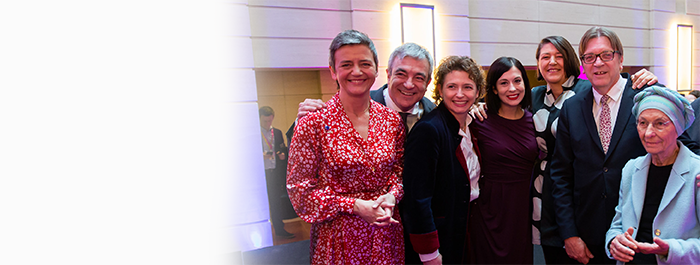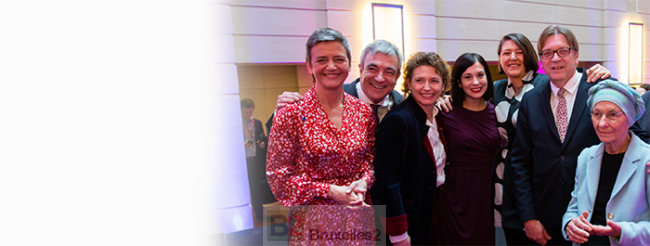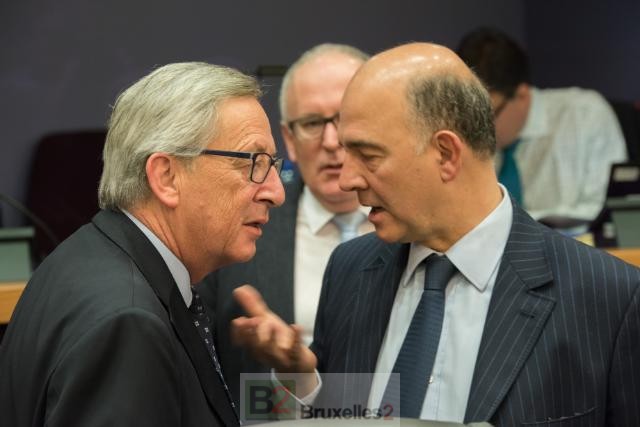Liberals, Democrats, and other 'Renaissance', the pivotal group
(B2) At the center of the European hemicycle, the liberals and democrats want to play the main role in forging new majorities in the future assembly. The bet assumes succeeding in expanding the family beyond the only Republic in progress on the French side. Even if it means dropping the liberal badge to insist on progressive and democratic tendencies
The cohesion of the party is measured by the number of heads of lists for European women. No less than seven main candidates make up 'Team Europe', including the Danish Margrethe Vestager, current Commissioner for Competition, who would see herself as the first woman to preside over the European Commission, or the Italian Emma Bonino, a true passion for Europe, back in politics after a cancer that almost won.
A (more or less) solid foundation
In Denmark, the foundations are relatively stable. Hardly jostled by the social democrats, the liberals of Venstre (V/ALDE), members of the coalition in power, ensure a second position (around 18% of the voting intentions). The rather centre-left Social Liberal Party Radikale Venstre (B/ALDE), to which Margrethe Vestager belongs, remains at a very modest score (6%), but equivalent to 2014. The two parties should therefore retain at least two seats and a seat.
Tops...
« A strong C's is a strong ALDE! proclaimed the chairman of the Alliance of Liberals and Democrats for Europe (ALDE) party, Hans van Baalen, at the end of April, delighted to salute the progress of Ciudadanos to the anticipated legislative elections in Spain. The Spanish centrist party could multiply by five its number of elected officials, going from two to ten. And thus help to swell the numbers of the Liberal Democrat group. Smiles also de rigueur in Germany. The German Liberal Party (FDP) would win between 7 to 8% of the vote according to the polls. Relatively low but constant since the start of the campaign. It is above all twice as good as in 2014. The Austrian liberals of NEOS should also exceed their score of 2014.
But also stockings
In Italy, former humanitarian aid commissioner Emma Bonino (Radical party) leads the list of Più Europa, a centre-left coalition of several parties including the Socialist Party and the Republican Party. But, according to the polls, it is close to the 4% threshold and therefore risks not sending elected officials.
In Belgium, the Flemish liberals of Open VLD, and its media leader, Guy Verhofstadt, outgoing president of the group in the European Parliament, seem to be in decline compared to 2014, victims of the push from the far right such as the Greens in Flanders. While in Wallonia, the liberal alter ego Reform Movement holds its line.
The modern center party SMC, in Slovenia, with the commissioner (for transport) Violeta Bulc head of the list of "Team Europe", is not credited with enough votes to hope for an elected representative. In Finland, the center (KESK) would lose votes and one deputy. In Hungary, the Momentum Mozgalom party is approaching the 5% threshold.
The emergence of a new group
All eyes are therefore on France and the 'Renaissance' list carried by La République en Marche (LREM), the party of French President Emmanuel Macron. His call for the emergence of a new group at the center of the chessboard, pro-European of course, to succeed the current ALDE group was received with hope. But that supposes going to draw left and right. The harvest is currently low except for a few individual rallies that the parties have not yet confirmed.
An enlargement to the left: very vague attempts
Certainly the Socialist Prime Minister, Antonio Costa, gave his support, on May 11, in a tweets, to the French president and to a progressive Europe, calling on May 20, on the steps of the Elysée, " to a grand coalition of democrats and progressives " at the European level. But an alliance does not mean a merger. And nothing yet says that the eight Portuguese socialist deputies (according to the polls) will leave the S&D group. Far from there. Likewise, the former Italian Prime Minister Matteo Renzi gave his support " to his friend Macron ". But does this mean that his Democratic party will join the new group? It is not impossible. The Democratic Party has always hesitated between the group of Socialists and that of Liberals and Democrats. But will all the Italian deputies, especially those from the left, take the plunge? Here again the tracks are blurred.
(Emmanuelle Stoesser)
Read our file on the elections: No. 67. European Elections 2019 (V6)
Find our analyzes of the political groups:


